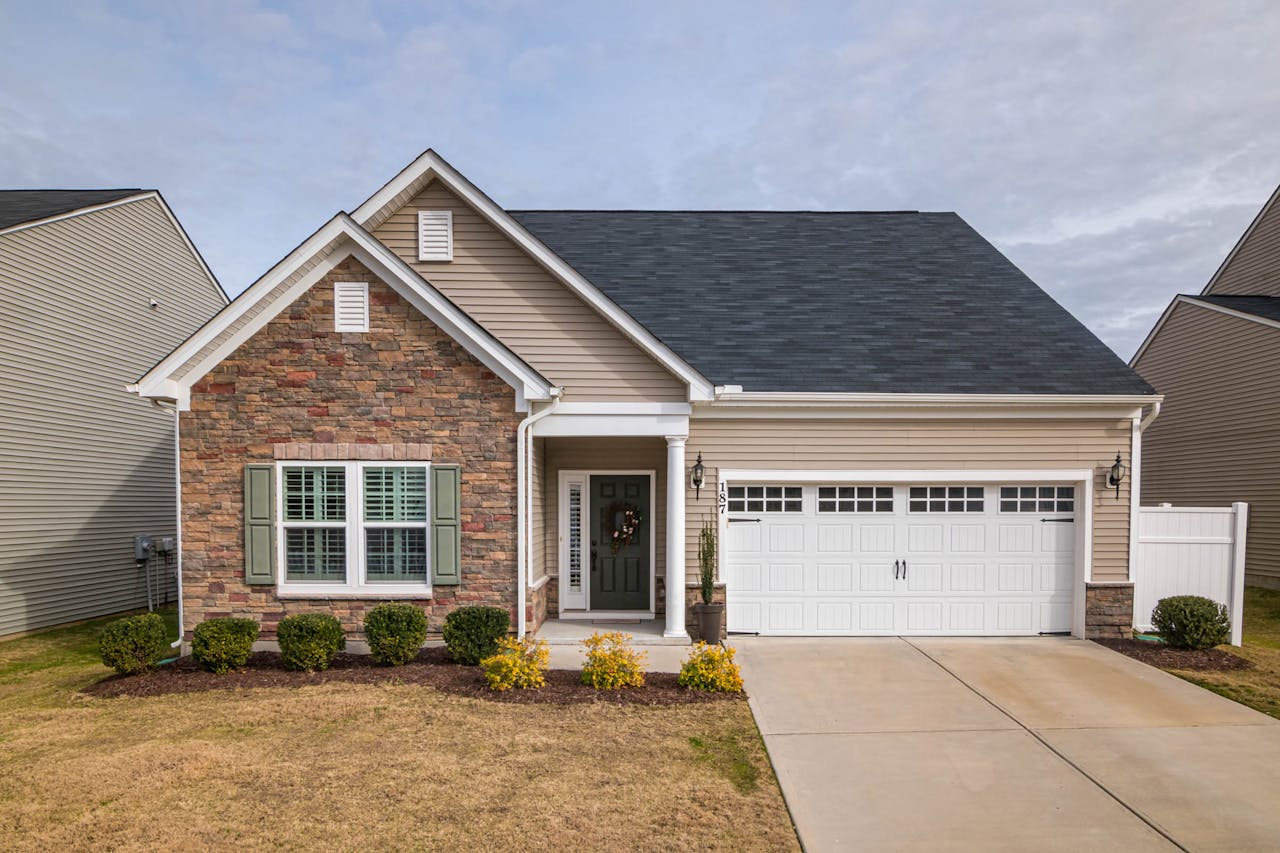Thinking about replacing your old, creaky garage door? A new garage door can dramatically enhance your home's curb appeal, boost its value, and even improve energy efficiency. This comprehensive guide walks you through the entire process, from initial planning to final maintenance, empowering you to make informed decisions.
What Steps are Involved in Replacing a Garage Door?
Replacing a garage door involves a series of steps, from careful measurements to the final installation. Whether you're tackling this project yourself or hiring a professional, understanding these stages is crucial. Accurate measurements of the door opening are vital to ensure a proper fit. Choosing the right material—steel, wood, aluminum, fiberglass, or vinyl—will influence both the aesthetic and the door's lifespan. Removing the old garage door and its hardware requires careful attention to detail. Next, installing new tracks and springs—critical components for smooth operation and safety—is a key part of the process. Finally, mounting the new garage door completes the transformation. Careful attention to each step is essential for a successful and safe garage door installation. Consider factors such as door disposal and appropriate recycling options during the removal process. For DIY installations, ample preparation and the right tools are essential.
How to Choose the Right Garage Door for Your Home?
Selecting the perfect garage door involves considering various factors to ensure it complements your home's style and meets your needs. Comparing materials like steel (known for durability and affordability), wood (offering a classic aesthetic), aluminum (lightweight and low-maintenance), fiberglass (strong and weather-resistant), and vinyl (budget-friendly and energy-efficient) is a crucial first step. Different door styles—sectional, roll-up, or carriage house—offer varied aesthetics and functionalities. Evaluating insulation needs for energy efficiency, especially in colder climates, is also important. Don't forget the aesthetic appeal: color options, window inserts, and overall design should complement your home's exterior. Think about the long-term maintenance requirements of each material as you make your decision.
What's the Average Cost to Replace a Garage Door?
The cost of replacing a garage door varies depending on several factors. The cost breakdown typically includes materials (the door itself, tracks, springs, and hardware), labor (if you hire a professional), and any additional features you choose, such as smart openers, insulated panels, https://brooksjkfw571.wpsuo.com/garage-door-accessories-your-2025-guide-to-enhanced-security-and-convenience or enhanced security features. Factors that influence the overall cost include the size of the door, the chosen material, the style of the door, the complexity of the installation, and your location. Budgeting effectively requires researching prices from different suppliers and installers. You can often find budget-friendly options by carefully considering the materials and features you need. It’s a good idea to get multiple quotes before making your decision.
When Should You Hire a Professional for Garage Door Replacement?
While some homeowners are comfortable tackling DIY garage door replacement, there are circumstances where hiring a professional is crucial. Safety is paramount, particularly when dealing with the heavy weight of the door and the potentially dangerous tension of the springs. Complex installations, particularly those involving significant structural work or unusual door configurations, often require professional expertise. Professional installers provide warranties on their work and possess the knowledge and experience for proper installation. They also have the right tools to ensure a safe and efficient process. In short, if you're uncertain about any aspect of the installation, a professional can provide peace of mind and ensure the job is done correctly and safely.
What Maintenance is Needed After Installing a New Garage Door?
Regular maintenance is key to ensuring the longevity and smooth operation of your new garage door. This includes routine checks of the door’s functions, ensuring all parts are working as intended and identifying potential problems early on. Lubricating moving parts like hinges, rollers, and tracks helps prevent friction and ensures smooth operation, reducing wear and tear. Inspecting the cables and springs for signs of wear or damage is essential for safety. Additionally, regularly checking safety features like the automatic reverse mechanism and sensors is critical. Addressing any issues promptly can prevent more extensive and costly repairs down the line. A small amount of preventative maintenance goes a long way.
Garage Door Material Comparison Chart
Material Cost Durability Insulation Value Maintenance Steel Low-Medium High Medium-High Low Wood Medium-High Medium Medium Medium-High Aluminum Medium Medium Low Low Fiberglass High High Medium Low Vinyl Low Low Medium LowGarage Door Maintenance Checklist
- Monthly: Inspect safety sensors, lubricate moving parts. Quarterly: Check cables and springs for wear, inspect weather sealing. Annually: Professional inspection and lubrication of all moving parts.
Frequently Asked Questions
What are the signs that my garage door needs replacing? Look for signs like excessive noise during operation, frequent malfunctions, visible damage to panels or tracks, or a generally outdated appearance.
Can I install a garage door myself? Yes, but it requires significant DIY experience, the right tools, and a strong understanding of safety procedures. Incorrect installation can be dangerous.

How long does garage door replacement take? Professional installation typically takes 4-6 hours; DIY projects may take longer, depending on experience and the complexity of the installation.
What type of garage door is most durable? Steel garage doors are generally considered the most durable, offering excellent resistance to damage and wear.
Is there a warranty for a new garage door? Most manufacturers offer warranties; always check the specifics before purchasing.
In conclusion, replacing your garage door is a significant home improvement project that offers both functional and aesthetic benefits. By carefully considering the steps involved, choosing the right materials and style, and understanding the costs, you can successfully upgrade your garage and enhance your home's value. Remember to prioritize safety and consider professional installation if you're unsure about any aspect of the process. Don't delay – start planning your garage door upgrade today!